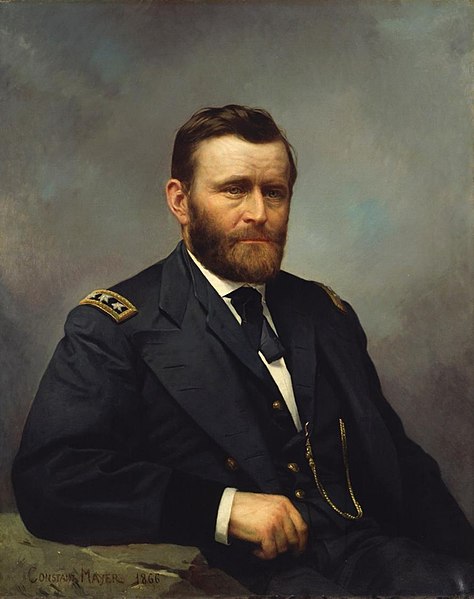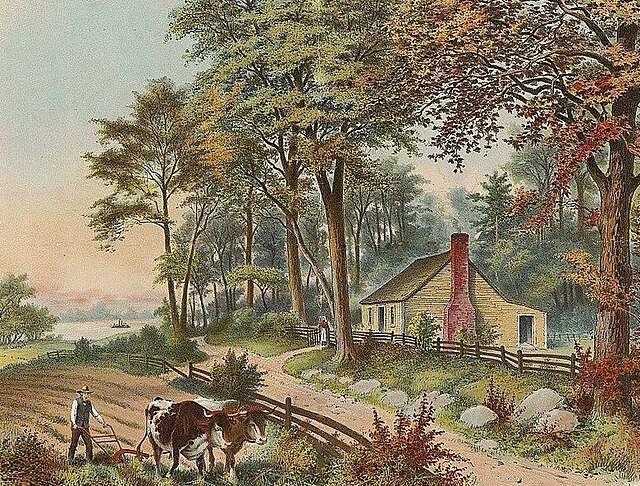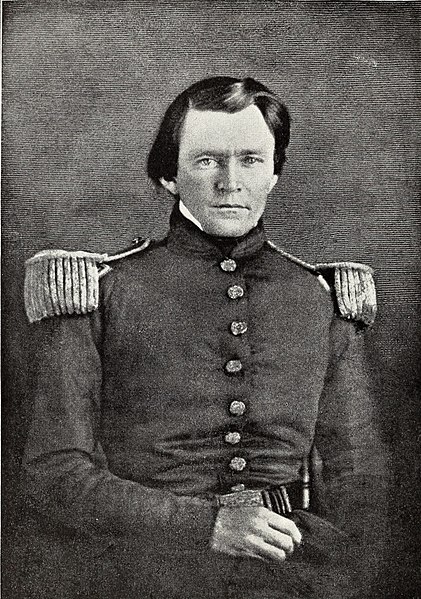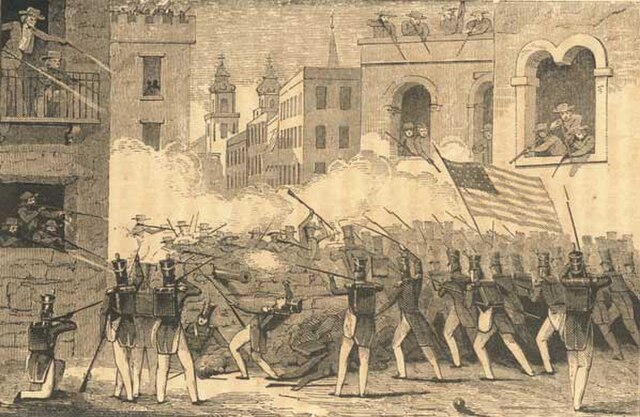Historical reputation of Ulysses S. Grant
Hundreds of historians and biographers have written biographies and historical accounts about the life of Ulysses S. Grant and his performance in military and presidential affairs. Very few presidential reputations have shifted as dramatically as Grant's.
Ulysses S. Grant 1822 – 1885 Portrait by Constant Mayer, 1866
Clockwise from lower left: Graduated at West Point 1843; Chapultepec 1847; Drilling his Volunteers 1861; Fort Donelson 1862; Shiloh 1862; Vicksburg 1863; Chattanooga 1863; Commander-in-Chief 1864; Lee's Surrender 1865
General Grant National Memorial, known colloquially as "Grant's Tomb", is the largest mausoleum in North America, and one of the largest in the world.
Detail of Thomas Nast's Amphitheatrum Johnsonianum suggests that precipitate action by Grant, Philip Sheridan and Edwin Stanton may be key to prevent future atrocities like the New Orleans massacre of 1866; Nast typically portrayed Grant as an almost mystical hero
Ulysses S. Grant was an American military officer, politician, and the 18th president of the United States from 1869 to 1877. As commanding general, Grant led the Union Army to victory in the American Civil War in 1865 and briefly served as U.S. secretary of war. An effective civil rights executive, Grant signed a bill to create the Justice Department and worked with Radical Republicans to protect African Americans during Reconstruction.
Grant c. 1870–1880
Grant's birthplace in Point Pleasant, Ohio
Grant as a young officer, c. 1845–1847
The Battle of Monterrey during which Grant saw military action








